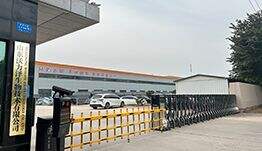Cos'è un 'Turbina Roots'?
Una pompa a soffiazione radice è una pompa rotante a spostamento positivo che funziona pompando un fluido con un paio di lobi intrecciati, non dissimili da una coppia di ingranaggi allungati. Il fluido viene quindi intrappolato in tasche attorno ai lobi e trasportato dal lato di ingresso a quello di uscita.


Perché il soffiatore rotante a lobi è chiamato “Roots Blower”?
Il soffiatore rotante a lobi positivo fu progettato negli anni '50 del XIX secolo dai fratelli Francis e Philander Roots. Fu successivamente brevettato nel 1860 dai fratelli e il nome Roots divenne il nome del progetto.


Qual è il principio base di un “Roots Blower”?
Il principio del soffiatore radice prevede quanto segue: il processo inizia con l'aria che fluisce dalla presa d'ingresso alla camera dell'elemento. La rotazione sincronizzata dei rotor contro la parete della camera crea una cosiddetta “direzione del flusso d'aria”. A questo punto, c'è ancora la pressione atmosferica in queste camere.
Non appena il primo lobo supera l'apertura verso il lato a pressione, la pressione del sistema viene regolata. Questo si chiama compressione isocorica. I rotori si sigillano reciprocamente all'interno, impedendo un cambiamento di pressione.
Come funziona un 'Roots Blower'?
Un soffiatore Roots funziona utilizzando il principio di compressione isocorica, anche noto come compressione esterna. L'aumento di pressione è ottenuto trasportando intermittente un mezzo gassoso (ad esempio, l'aria atmosferica) in un sistema.
Forzando il mezzo dalle condizioni atmosferiche in un sistema con una determinata resistenza (ad esempio, una colonna d'acqua, rete di distribuzione), si ottiene l'aumento di pressione desiderato. Il soffiatore Roots opererà a un livello di uscita controllato per superare questa resistenza.
Prodotti Consigliati
Notizie Calde
-
È vero che allevare pesci in vasche di tela ad alta densità è più efficiente rispetto alle vasche comuni?
2024-12-16
-
Vantaggi delle vasche per pesci in tela galvanizzata
2024-10-14
-
Tecnologia di allevamento ittico ad alta densità, costo della vasca per pesci, vasca per pesci in tela, vasca in tela, allevamento ittico ad alta densità
2024-10-12
-
Perché scegliere l'aquacoltura ad alta densità con acqua corrente
2023-11-20















































